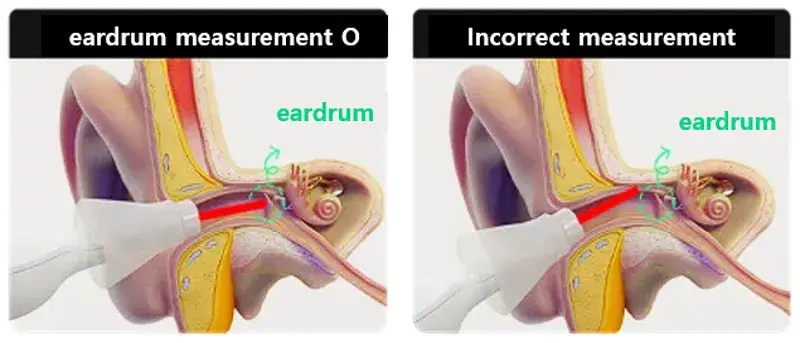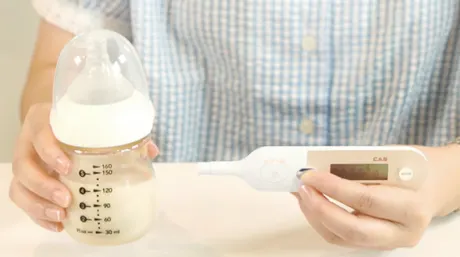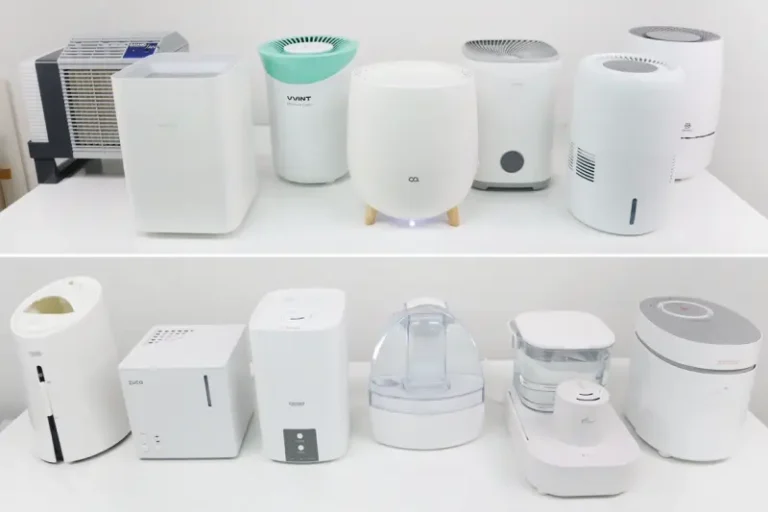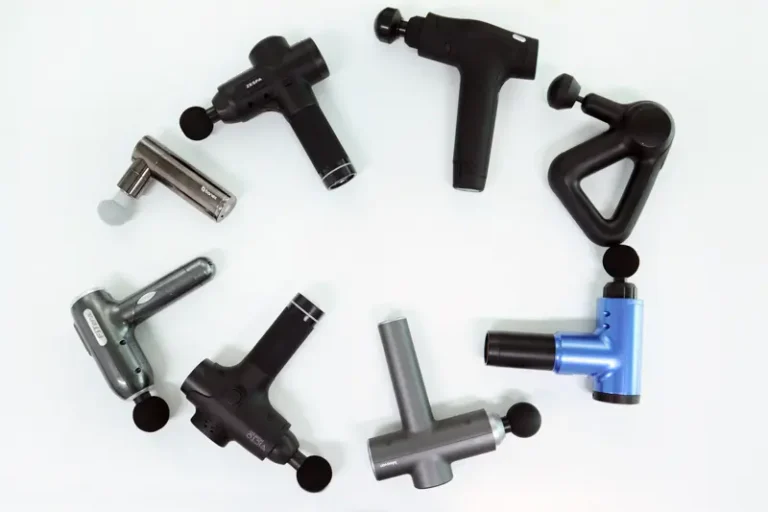The Best Thermometers Buying Guide

How to Choose a Thermometer for Monitoring Child’s Fever?
Fever is a common symptom that accompanies various illnesses. As children grow, they often develop fevers due to different causes. Since children may not be able to express their condition accurately, regularly measuring their temperature, even when they’re not sick, can help detect abnormal signs early.
Thermometers are used more frequently with younger children. Let’s explore the criteria for selecting the right thermometer.
Chapter 1.
Types of Thermometers
Classification by Sensor Type and Measurement Location
In the past, mercury thermometers, which expand with temperature changes, were commonly used. However, following the Minamata Convention adopted in 2013, the production and use of mercury-containing thermometers and blood pressure monitors are now prohibited. With technological advancements, digital thermometers that display measurements numerically on a screen have become popular, replacing the analog method of reading temperature scales directly.
Digital thermometers are mainly divided into two types based on their sensor 1. Thermometers using thermistor (semiconductor) sensors that measure temperature based on the resistance value of semiconductors. 2. Thermometers using infrared sensors that can measure temperature within one second by detecting the infrared radiation emitted by objects. Besides sensor types, thermometers can be further categorized into three types based on measurement location and form:

1. Pen-type Thermometer
Uses a thermistor (semiconductor) sensor
Requires direct contact with the measurement site
Takes 3-5 minutes for measurement
This type is affordable and highly accurate, making it popular for general use. It’s officially classified as an “electronic thermometer” in medical device categories.

The thermometer is placed under the tongue or in the armpit for temperature measurement. On average, it takes about 3-5 minutes of contact for a reading. Some products offer shorter measurement times of 10 or 60 seconds, but accuracy tends to decrease with shorter measurement times. Compared to infrared sensor methods that can measure in 1-2 seconds, this method takes relatively longer.
2. Ear Thermometer (Tympanic)
Uses an infrared sensor
Measures eardrum temperature, requiring contact with the ear
Measures within 1-2 seconds

Ear thermometers are the most efficient, offering accurate, fast, and convenient temperature measurement. However, they shouldn’t be used if there’s inflammation or discharge in the ear. This method involves inserting the probe into the ear canal to measure the eardrum temperature.
The eardrum is suitable for measuring core body temperature as it shares the same blood supply as the hypothalamus, which regulates body temperature. Using an infrared sensor, it can measure temperature in just 1-2 seconds.
It’s officially classified as an “ear infrared thermometer.”
Filter Usage

Ear thermometers are divided into those that use disposable filters and those that don’t.
Filters help with hygiene and sensor protection. However, most products won’t function without a filter, so you need to keep spare filters on hand (1,500-2,000 won per box of 20). Some users might find the texture of the filter uncomfortable when inserted into the ear, or the filter wings might touch the ear uncomfortably.
Filter-free products save on the cost of disposable filters and may feel more comfortable in the ear. For hygiene, the measuring part is disinfected with an alcohol-soaked cotton swab after use.
Multi-function Thermometers (Ear + Skin)

Some products offer multiple measurement modes, utilizing the fact that both ear thermometers and non-contact thermometers use infrared sensors.
Besides measuring eardrum temperature by insertion into the ear, they can also function as non-contact thermometers with additional attachments. Many of these also include modes for measuring object temperatures, increasing their versatility.

However, having multiple measurement capabilities doesn’t necessarily make a product superior. While there are differences between brands and products, most apply calibration to measurements in different modes. If users are unaware of these calibrations, they might misinterpret the results.
3. Non-contact Thermometer (Skin)
Uses an infrared sensor
Used at a distance of about 1cm from the forehead or temple
Measures within 1-2 seconds

These thermometers have low risk of infection due to no direct contact and can quickly and conveniently measure multiple people’s temperatures in 1-2 seconds. They became widely popular after the COVID-19 pandemic.

However, they tend to be less accurate than other methods because they measure skin temperature, which is more affected by external factors. It’s difficult to consistently measure the same spot, and even within 1cm, the measurement can vary with distance. If there’s a fever, the skin might sweat to lower body temperature, further reducing accuracy.
Therefore, it’s recommended to use these for rough estimations of whether a fever is present rather than for precise temperature measurements.
They are officially classified as “skin infrared thermometers.
Chapter 2.
Measurement Performance of Thermometers
Errors can occur depending on measurement method and user in actual use
All thermometers sold in the US are FDA-approved Class II medical devices, validated for temperature accuracy in human body temperature measurement. The basic measurement performance of most household thermometers is similar, with an accuracy of ±0.2°C (±0.3°C for non-contact types) within the body temperature range of 35-39°C (95-102.2°F). These are generally suitable for home use.
However, in real-world conditions unlike laboratory settings, accuracy and precision can vary based on measurement method and environment.
Performance can be divided into accuracy and precision. Accuracy refers to how close the measured value is to the actual body temperature, while precision indicates how consistent the measurements are with each other.

1. Accuracy of Thermometers
Should be chosen based on measurement method rather than individual product accuracy
Accuracy is difficult to compare between individual products due to the challenge of determining a standard reference body temperature. Generally, measuring temperature from areas less affected by external factors yields higher accuracy.

The order of accuracy is known to be: Rectum (anus) > Eardrum > Oral > Armpit >> Forehead (skin). More accurate sites tend to be closer to core body temperature and thus give higher readings. Therefore, the threshold for determining fever varies depending on the measurement site.
| Age/Location | 0~2 years | 3~10 years | 11 years |
|---|---|---|---|
| Rectum (anus) | 97.8~100.4 | 97.8~100.4 | 98.6~100.5 |
| Ear (eardrum) | 97.5~100.4 | 96.9~100 | 96.6~99.6 |
| Oral (mouth) | 95.9~99.5 | 95.9~99.5 | 97.5~99.6 |
| Armpit | 94.4~99.1 | 96.6~98 | 95.3~98.4 |
Non-contact thermometers are less accurate because they measure skin temperature, which is most affected by external factors. Especially when there’s a fever, sweating to lower body temperature can decrease skin temperature, making it unreliable to judge body temperature solely by non-contact thermometers.
Rectal temperature measurement is mainly used for newborns in hospitals but is rarely used now due to infection or injury risks and long measurement time (about 5 minutes).
2. Precision of Thermometers
Minimize external interference and use correct measurement methods
If consecutive temperature measurements yield different results, the precision is considered low. However, it’s important to note that a person’s left and right eardrum temperatures can differ, and skin temperature varies by location.
Thus, even if the thermometer itself has high precision, user-dependent factors can affect precision. To increase precision, it’s crucial to measure at the same location using the same method consistently. Especially for infrared sensors, even slight changes in distance within 1cm can alter the measurement, so proper aiming is important.
Main causes of measurement errors when using ear thermometers

Since the ear canal isn’t straight, pull the ear backward to align the sensor with the eardrum. The sensor should measure the eardrum temperature, not the ear canal wall, for accurate results.

Generally, for children, pull the ear backward and downward, while for adults, pull the ear backward and upward.
The shape of the ear varies depending on age and individual characteristics. If the correct measurement technique is not understood and applied, or if the thermometer’s design is not suitable, it may lead to inaccurate temperature readings. The error in measurement can be significant depending on these factors.
Chapter 3.
Additional Features of Thermometers
Convenient features to look for in a thermometer
1. For use in dark environments
Backlight Convenient for checking measurements in the dark
Light: Essential auxiliary light for ear thermometers
When your child is sick, you may need to check their temperature while they’re asleep. Therefore, it’s beneficial to purchase a product with the following features for comfortable use in dark environments
Backlight

Products with a backlit display allow you to check the measurement even in dark surroundings. However, if it’s too bright, it might interfere with use, so it’s recommended to check reviews carefully.
Light

Due to the nature of ear thermometers requiring precise insertion into the ear canal, they can be difficult to use in dark environments. Many people use a nursery light or phone light to illuminate the area.

If the thermometer has a built-in light feature, it’s convenient, but not many products have this feature.

However, Braun thermometers, which have the highest market share, offer a compatible accessory – an auxiliary light in the form of a battery cover. Using this can improve convenience during nighttime use. It costs around $10.
2. Measurement distance alarm function
Very useful for non-contact thermometers

Non-contact thermometers need to maintain an optimal distance of about 1cm from the measurement target. Therefore, a distance alarm function that automatically recognizes and notifies the correct distance allows for consistent measurements and ease of use.
3. Object temperature measurement
Usable in daily life for formula, bath water, etc.

The object temperature measurement function, commonly found in non-contact thermometers, utilizes the advantage of infrared sensors to measure temperature quickly without direct contact. It can be useful in everyday life for measuring the temperature of formula, bath water, etc.
4. Dedicated app
Bluetooth support allows automatic temperature recording using a dedicated app

When you measure temperature, you need to record it somewhere. These days, there are many parenting apps that can record a child’s condition, so you can input the temperature after measurement. Thermometers that support Bluetooth and dedicated apps can automatically save measurement records by connecting to a smartphone, which is convenient. However, if you want to record in an existing parenting app, you’ll need to save manually, so it’s not necessary to choose a product based on this feature alone.
5. Storage components
Providing a case makes storage convenient

It’s good to choose products that come with a cap or case to prevent the sensitive sensor from being damaged by collision with other objects.
Especially for products using filters, it’s convenient to have a case that can store the filters as well.
Conclusion
Ear thermometers are recommended
It’s good to use other thermometers as a backup.
Among thermometers used at home, pen-type thermometers and ear thermometers have high accuracy. However, since pen-type thermometers generally take about 5 minutes to measure, ear thermometers that can measure in 1-2 seconds are recommended. Note that ear thermometers must be used with the correct technique to properly measure eardrum temperature.
For babies under 6 months with ear canals too small for ear thermometers, it’s recommended to use a pen-type thermometer to measure armpit temperature.
Non-contact thermometers are convenient as they can quickly measure temperature without direct contact, but they tend to be less accurate compared to other methods, so it’s recommended to use them as a supplementary device.







